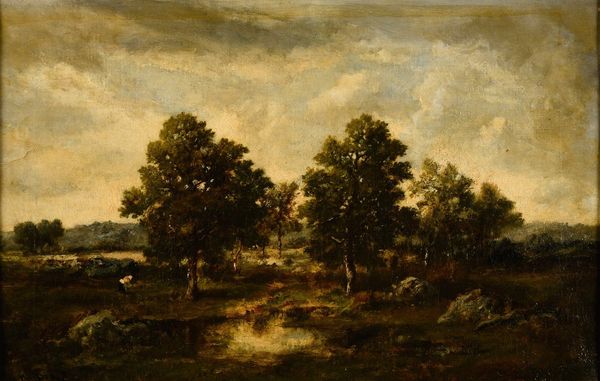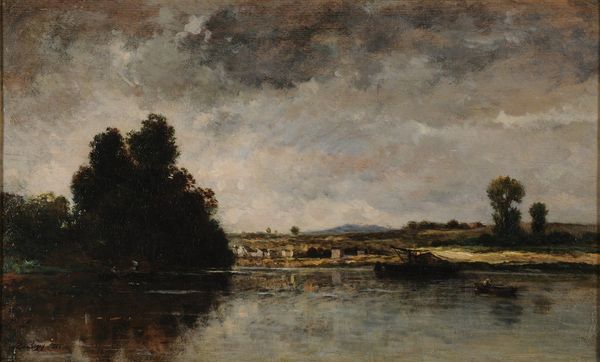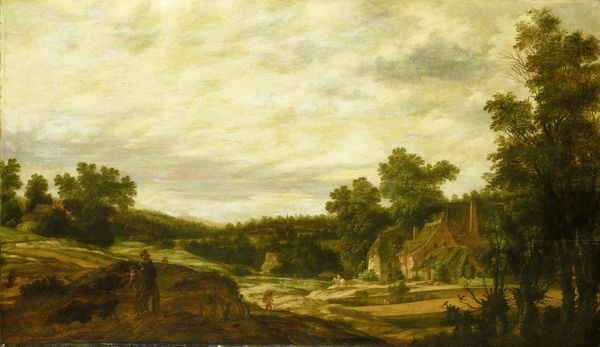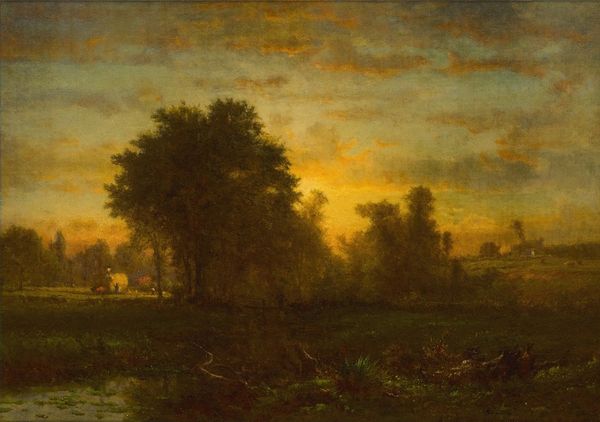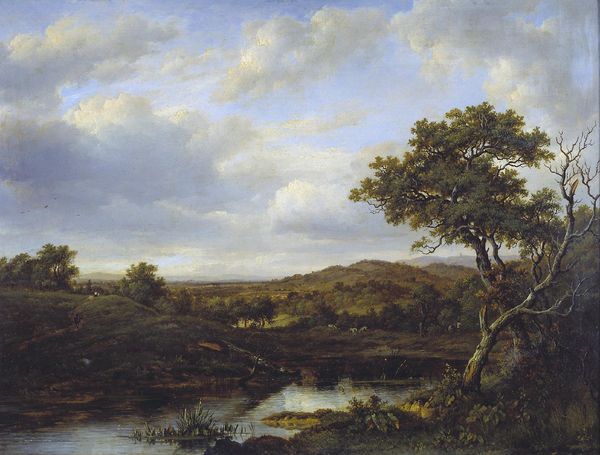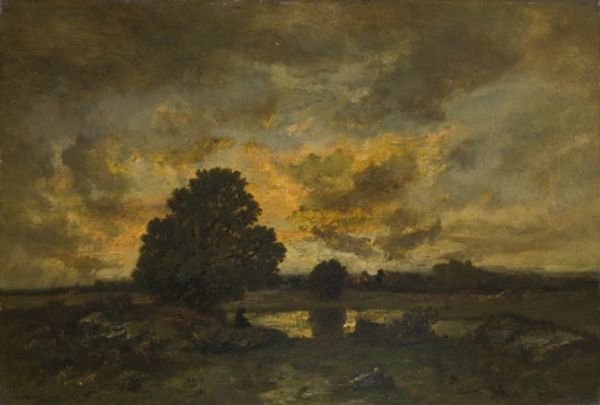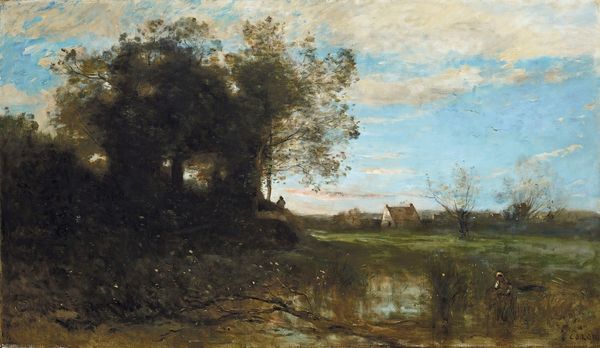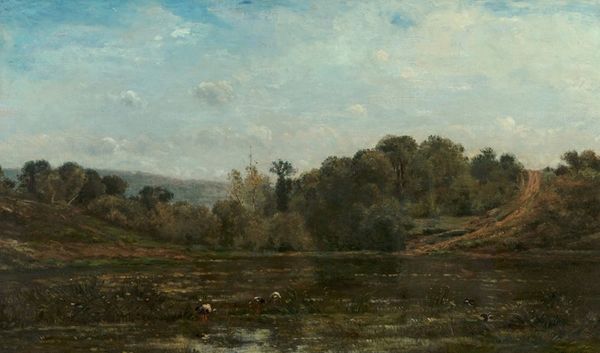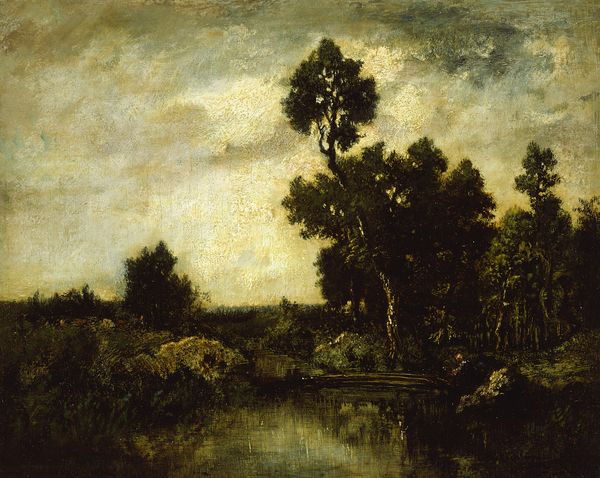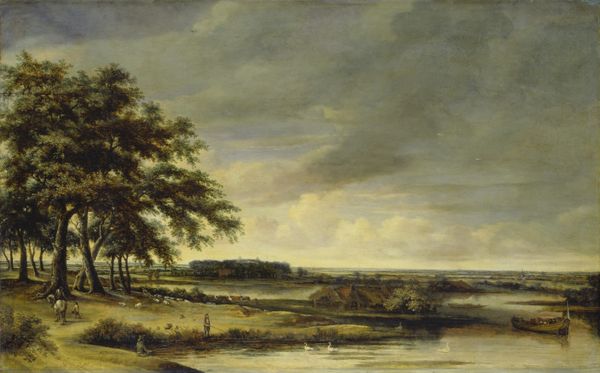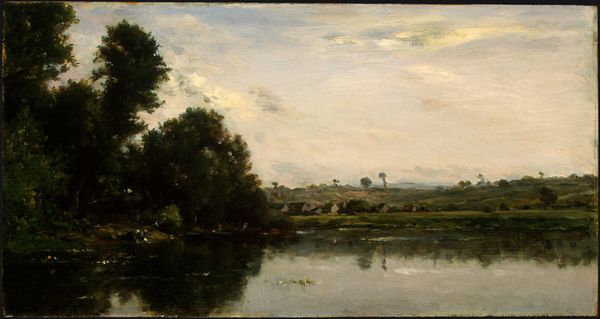
Copyright: Public Domain: Artvee
Curator: This is Charles-François Daubigny’s, "Le bac", created in 1866. It's an oil-on-canvas painting. Editor: Wow, it feels quiet, almost like a lullaby. The subdued palette, mostly grays and greens, evokes a real sense of tranquility. I can almost smell the river. Curator: Daubigny was a significant figure in the development of Impressionism and he dedicated himself to plein-air painting to catch such ephemeral moments, which was rather revolutionary then. He really aimed to depict the essence of the French landscape and this interest positioned him well within the Barbizon School. Editor: It's fascinating how he captures the light on the water. It’s not about precise detail, but rather a mood, a fleeting impression. Makes you think, doesn’t it? The boat with those two cows seems like a fragile vessel in a vast world. What did Daubigny try to show with this painting? Curator: One could interpret this scene as a depiction of rural life—Daubigny was very attuned to the peasant experience—but it also evokes broader concerns of labour, social change and what impact industrial progress was having on country life and tradition at that moment in the second half of the 19th century in France. His art reflects social realism but within a delicate, romantic register. Editor: So it's more than just a pretty landscape, then! Knowing that gives the artwork a different feel, it's deeper, more profound. Perhaps it even hints at a nostalgia for a vanishing way of life, for a time before mechanization took over. Curator: Exactly. Daubigny uses nature as a lens to observe societal transformations. He had an eye for capturing the unadorned beauty of common, rural life without glorifying it, something which, in many respects, was new territory in art. Editor: It's really grown on me. Initially, I saw the peace of it all. Now, it’s become a sort of serene lament, which makes me appreciate Daubigny’s delicate touch even more. Curator: His work definitely deserves more widespread attention. It occupies a critical place between romanticism and the early impressionists, charting key social changes on the land. Editor: I’m walking away with a completely new appreciation. I think it makes one meditate not only on art, but more precisely, on life itself and what the future brings, it makes the invisible visible somehow. Curator: Indeed. It's the intersection of art, life, and history. Hopefully this talk makes our visitors see more closely when visiting this painting!
Comments
No comments
Be the first to comment and join the conversation on the ultimate creative platform.
